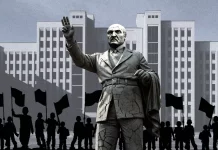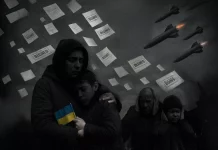
By Polygraph
“On this subject, we would like to again emphasize that Russia’s position remains the same: we find it unacceptable to even use the term “Soviet occupation,” a construct some try to use to interpret the liberation of European nations from Nazi enslavement. Therefore, we also reject these legally void claims against Russia.”
False
The Soviet Union occupied Estonia.
On September 20, the Russian Foreign Ministry tweeted a response by Foreign Ministry spokesperson Maria Zakharova to statements by the Estonian Foreign Minister regarding Estonia’s right to claim damages from the Soviet occupation of that country. Zakharova said the use of the term “Soviet occupation” was “unacceptable” and a “construct used to interpret European peoples’ liberation from Nazi enslavement.”
#Zakharova on Estonian Foreign Minister’s statements on the country’s right to claim damages for the “Soviet occupation”:We find it unacceptable to even use the notion of “Soviet occupation,”a “Jesuit” construct used to interpret European peoples’ liberation from Nazi enslavement pic.twitter.com/qR1cjYFUYc
— MFA Russia 🇷🇺 (@mfa_russia) September 20, 2019
Estonia, like its other Baltic neighbors Lithuania and Latvia, first gained independence when the Russian Empire disintegrated in 1917. All three Baltic states remained independent throughout the interwar period, but lost their independence thanks to a secret protocol of the Molotov-Ribbentrop Non-Aggression Pact signed between Nazi Germany and the Soviet Union on August 23, 1939. The pact divided Central and Eastern Europe into two spheres of influence, with the Baltic region mostly falling into that of the Soviets. The USSR began its annexation of the three Baltic republics first by compelling them to sign agreements allowing Moscow to station Red Army troops on their territory. Pro-Soviet puppet governments were then formed, which arranged “voluntarily” joining the Soviet Union as Soviet republics. Estonia did so in June 1940.
The annexation was not recognized internationally, even after 1944, when Soviet forces drove German occupiers out of the Baltic states and reestablished control over them. From the standpoint of international law and the Geneva Convention, all three states were occupied by the Soviet Union. This status was based on international recognition, the continuity of Baltic states from the interwar period, and organized, armed resistance that continued into the early 1950’s.
We reject historically inaccurate claims by @mfa_russia that #Estonia was “liberated” by Soviet troops. The Republic of Estonia didn’t take part in #WWII and was occupied by both Nazi Germany & Soviet Russia. The so-called “liberation” was occupation that lasted nearly 50 years.
— Estonian MFA (@MFAestonia) September 22, 2019
Because the Russian Federation took on the role of successor state to the Soviet Union, in order to avoid just the kind of legal liabilities cited by the Estonian foreign minister, it adopted the Soviet position that the Baltic states joined the Soviet Union of their own accord.
Thus, while it remains debatable whether or not the Baltic states deserve compensation for damages incurred by the Soviet occupation and what such compensation should be, the historical record is clear: the Baltic states were annexed and occupied by the Soviet Union for decades.
By Polygraph




